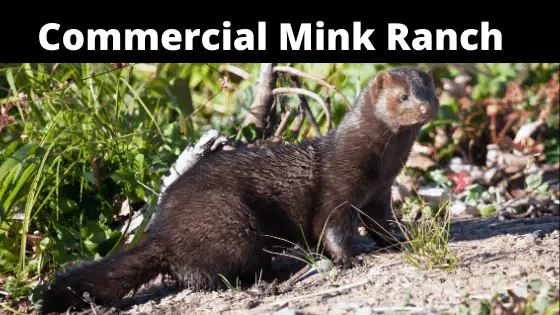Guide for profitable Mink Farming, Housing, Diet, Selling, and Health of your Animals
Commercial Mink Farming
Commercial Mink Farming – The raising of mink in captivity is a direct response to a dwindling supply of wild animals and a constantly increasing demand for fur.
See Amazons Educational Resources for Raising Mink
The fur produced by the farm minks is the most important type of fur produced in North America today, in terms of the number of pelts produced and the value of the fur.
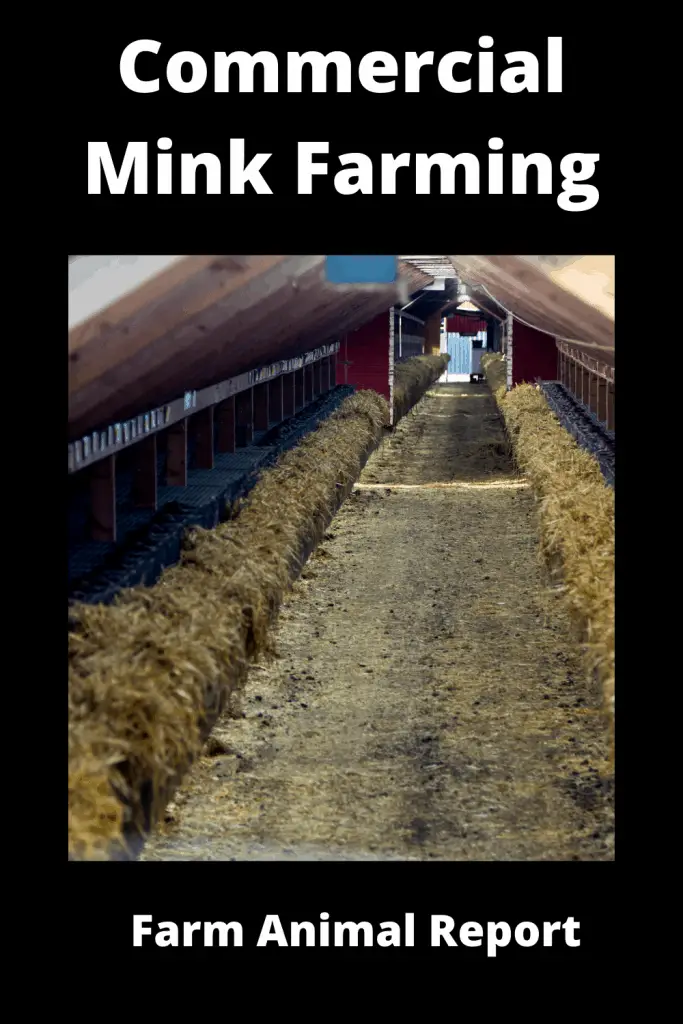
Fur farming provides important jobs and income for rural communities at a time when many forms of agriculture are becoming increasingly difficult for small family operations.
If you are also interested in mink farming and want to know their housing, feeding, breeding, management, and their market.
Then this post will be useful for you.
Proper husbandry, handling, and management are essential for the health and well-being of mink. Each time technology is introduced into the farm, its effect on animal welfare should be considered.
First of all, we will discuss the history of mink farming.
Mink Farming History
The United States was a pioneer in Mink farming over 150 years ago, during the Civil War, on Lake Casadaka, New York. The first attempts to raise minks in Canada were recorded in the 1870s, by the Patterson brothers, in Richmond Hill, Ontario.
Although originally taken from the wild, after more than 100 generations (more than 2000 human years) farmed mink are now considered domesticated minks.
Through careful selective breeding, North American farmers have developed a wide range of beautiful natural fur colors. In reality, farmed mink are completely different from their wild cousins. They are much bigger and tamer.
Land Requirements Mink Farm
The location of the mink farm must be chosen carefully. Due consideration must be taken of local environmental conditions, expected neighborhood development, and subsequent agricultural development.
If you are a farmer then you are responsible for the safe and effective disposal of any “waste” materials and their reuse and recycling according to all applicable state laws.
The minks are generally grown in enclosed sheds, and there is generally no runoff from inside the sheds, however, runoff can be eliminated during rains by locating suitable sites and using the walls and drainage in the farm.
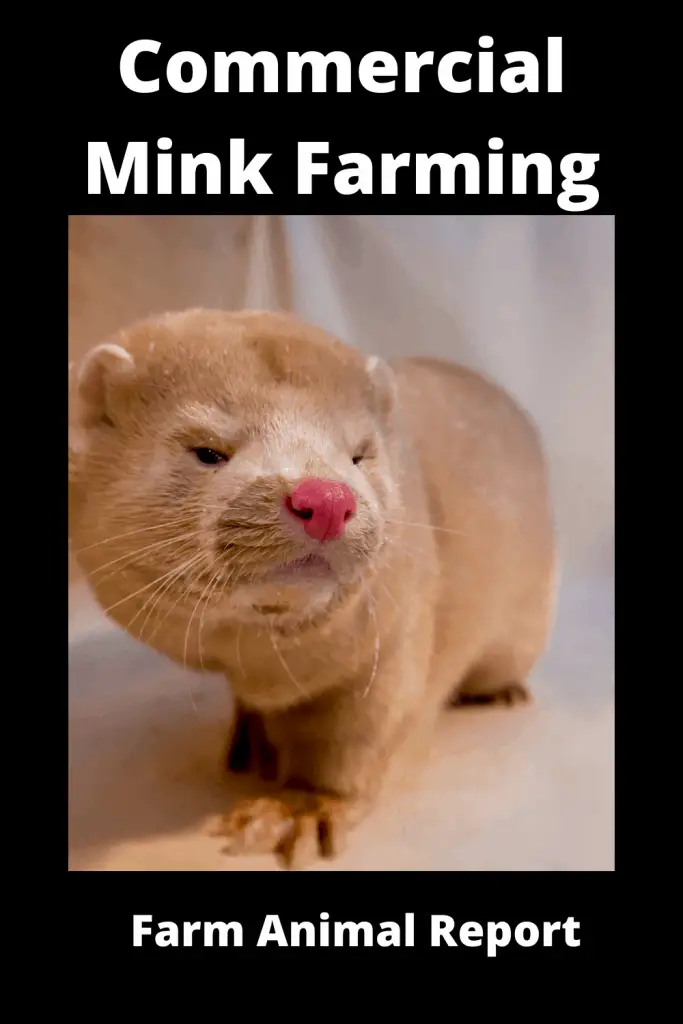
Use high-standard management in preventing pollution of neighboring streams, rivers, or groundwater.
It is necessary to provide clean water, accessible at all times, to provide drinking water, as well as to ensure hygiene in food preparation areas.
In areas where the weather is uncomfortably warm for the mink in summer, it is recommended to use water sprinkler systems in the pens to improve the comfort of the mink.
Farms should be away from excessive artificial light and noisy environments. It is advisable to care for the buffer zone that separates the animal shed area from the surrounding activities.
A protective fence should be built around the perimeter of the area where the mink farm is located to protect animals from predators or wildlife that transmit diseases and to prevent unrestricted minks from leaving a biologically safe environment.
Mink Sheds
Any building erected to house mink must provide proper ventilation as well as clean, hygienic conditions, and at the same time afford protection from the elements.
Sheds may be constructed to hold any number of rows, providing air quality and manure management standards are met.
Sheds must be constructed to afford maximum adaptability to the site location, protection from the elements, and take advantage of natural ventilation and lighting.
Mink sheds are normally open-sided. Partial or total closure of sheds should be considered only in extreme conditions such as severe wind or cold, drifting snow, or driving rain.
Mink should be kept in enclosed buildings only if the natural photoperiod which governs the animals’ reproductive and furring cycle is maintained.
The areas under the pens must allow the efficient removal of manure and used bedding materials.
Sheds should be constructed to provide the optimum working conditions required to provide efficient animal care.
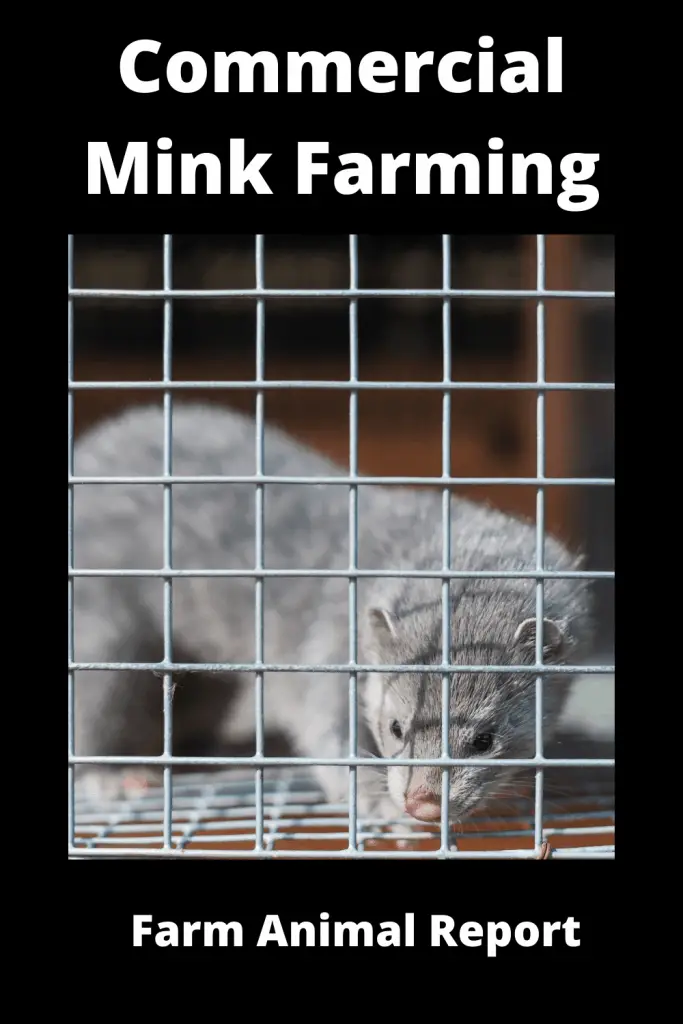
Mink Farming Equipment
Mink Pens
Mink pens should provide enough space for the mink to make a normal physical movement and should allow natural activities such as resting, sleeping, grooming, defecating, and, in the case of breeding pens, rearing of young ones.
Pens that contain mink must be built in a durable way to ensure and prevent animals from hurting themselves or those in neighboring pens
The pens should have sufficient height above the ground to allow feces to fall from the pen and to clean the manure.
The pens should be of sufficient size to promote the general welfare of the animals. These guidelines require raising pens of 4,300 cubic inches and 3,800 cubic inch pens for the first 2 minks and 900 cubic inches for each additional mink.
The volume of the nesting box counts as additional space when attached outside the pen. The height of the pen affects the access of the mink to food. To ensure timely weaning of the kits, the minimum height of all pens will be 12 inches.
Pens that contain female breeders must be at least 6 inches tall. The minimum width for pens that contain male breeders should be 7.5 inches. Pens designed for single mink should be at least 2500 cubic inches
The arrangement of pens must enable visual and physical examination of all areas and all housed mink. In each pen, a freshwater source must be available and in such a position as to permit easy access by the mink, and inspection and cleaning by the farmer
Nest Boxes for Whelping
The nesting area should be included in each pen, either in the form of a wooden box or “wirenester” so that the mink can rest and sleep comfortably.
A clean, dry nester must be designed to accommodate appropriate nesting materials. Nesters must be designed to provide sufficient space according to the sex and size of the mink, to permit each animal to rest and sleep comfortably.
Boxes of the breeder’s nest should allow sufficient space for the mother and her litter. Special consideration must be given in time for ways to avoid unnecessary exposure to the mother and her kits.
Adult minks are kept in individual wire pens, and it is a common practice in farming to hold up to 3 kits together in the first month after weaning. The mink is provided with a nest box for the breeding season.
The nesting area should be free from any problems that could cause discomfort to the mink.
Catch Cages for Movement
There are special Cages that allow moving Mink from cage to cage. They are called Catch Cages.
Mink Nutrition
Mink must be fed with a complete diet that meets the different nutritional needs of animals and is modified according to the nutritional requirements of the mink’s life stages.
Farmed mink feed on leftovers from our food production, the parts of chickens, pigs and fish that we don’t eat.
Feed preparation
When you are dealing with fresh and frozen animal products that can deteriorate rapidly, you must ensure that collection, storage, and preparation are carried out in hygienic conditions.
Containers used to collect animal by-products should be resistant to distillation. The containers should be thoroughly washed after each collection.
When collecting all by-products store them under refrigeration or keep them to ensure freshness and nutritional value. It is essential to refrigerate and reserve the food to take advantage of the seasonal availability of materials.
Food preparation machinery, mills, mixers, and blenders should be cleaned after use and maintained regularly.
Dry foods, such as cereals and supplements, should be stored in dry circumstances, and safety measures should be taken to prevent vermin infestation.
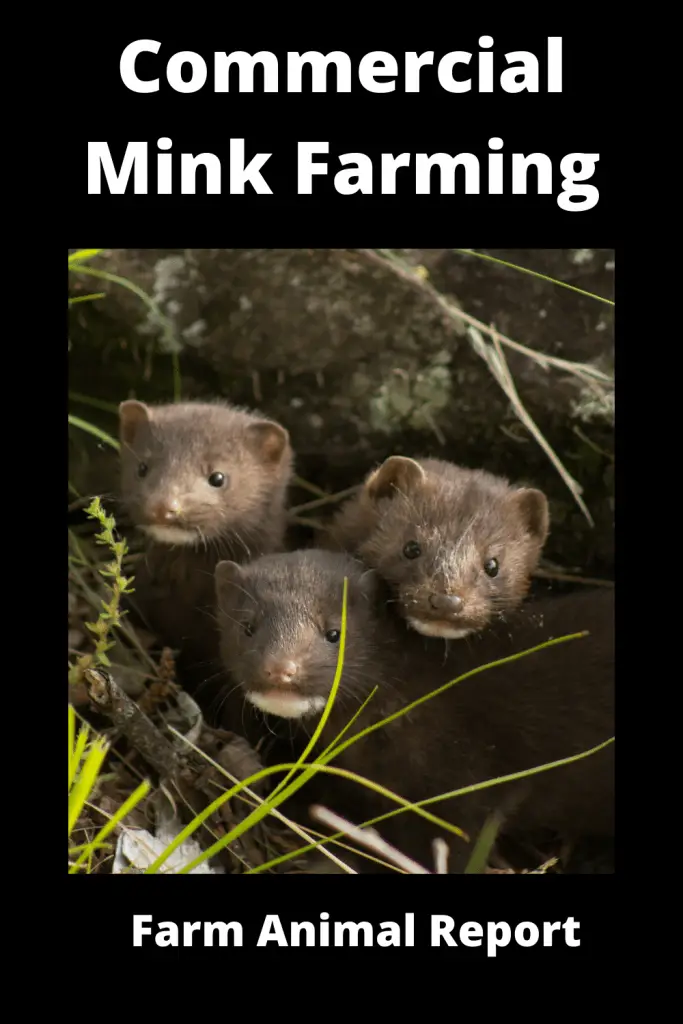
Feed distribution
Enough food should be given at all times to ensure the health and well-being of the mink. The food should be placed in a position such that the mink can easily reach it. This is particularly important with young kits and during periods of extreme cold.
Food must be available daily for all growing minks. Feed machines and all utensils for food distribution should be kept clean.
Mink Watering Equipment
Always ensure that the mink has clean, fresh water available at all times. When a fully automatic or semi-automatic system is used, an alternative water supply is required during freezing periods.
Care must be taken to ensure that automatic water systems remain clean and individual valves or nipples function properly.
Regular maintenance should be performed to prevent leakage of valves and connections that can cause wet areas on the farm.
The watering system must ensure easy access to drinking water; the system must be checked during hot weather to ensure continuous availability.
In areas where the weather is uncomfortably warm in summer, it is recommended to use water sprinkler systems in the pens to enhance mink comfort.
Lighting
The mink are sensitive to lighting conditions. Sexual development and fur growth depend on exposure to light.
Artificial light bulbs in pens should be used with caution, as they may adversely affect the light period and interfere with the natural reproductive cycle.
Temperature
Mink sheds are not heated or insulated. Animals are farmed under natural daylight and temperature conditions and are protected from direct sunlight and wind.
It is important to maintain a comfortable environment for mink, especially during times of extreme heat or cold, and during the whelping and lactation periods.
If you have maintained the farm temperature, it will minimize drafts and bedding need during cold periods.
Otherwise, appropriate dry bedding should be available in the nest box during delivery, lactation, furring, and winter months to help reduce the risk of hypothermia
Air Quality
Adequate ventilation is important for the health and well-being of mink. Ventilation helps maintain air quality and controls the temperature so animals can live comfortably.
A good flow of air into the shed will help control wet and damp conditions, help reduce odors and ammonia and reduce the spread of pests.
Ventilation needs an increase in hot weather. Closing the sheds in the winter season will reduce airflow and may predispose to respiratory diseases.
If natural ventilation is not sufficient, a mechanical system is required for commercial mink farms.
Mink Breeds
There are two species of minks
- American mink
- European mink
American mink represents a more specialized form than the European mink. European mink is similar in color to the American mink, but is slightly smaller and has less specialized skills.
Breeding
Mink breeding occurs once a year from late February to early March. In minks, ovulation occurs by mating and the length of pregnancy ranges between 39-75 days (average 51 days) due to the natural delay in implanting the fertilized egg.
The female gives birth to a litter consisting of 1-12 kits (average 5 or 6) during late April and early May and nurses for 6 weeks.
Mink farms usually do not exchange male breeders between them as a result of the breeding of genetically related mink occurs.
This inbreeding reduces fecundity, litter size is small and mink offspring are weak, these are the characteristics that are not economically efficient.
If females do not produce large and healthy litters, fewer minks are produced, less mink reaches maturity and, therefore, the amount of skins and benefits generated by the farm is reduced.
Diseases
As you are rearing minks you must always be aware of the condition of your herd and be able to distinguish the signs of a distressed or sick animal.
You must develop an ability to recognize any abnormalities of performance, action, hunger, feces or other signs of ill health.
If any of the minks becomes ill or injured, they should be treated immediately or depending on the severity of their condition.
Some of the common diseases that occur in minks are
Aleutian disease
Aleutian disease is caused by parvovirus infection. This disease is characterized by:
- Poor reproduction
- Gradual weight loss
- Oral and gastrointestinal bleeding
- Renal failure and uremia
- High mortality
All color phases of the mink can acquire the disease, but the light color phases are most susceptible to infection.
The parvovirus that causes viral mink enteritis is not associated with it. Transmission occurs in the womb and through direct or indirect contact with the affected mink.
All positive minks should be culled from the farm. Mink to be stocked for breeding purposes must be tested in late autumn (before selection and stocking of breeding stocks) and in January or February (before reproduction).
If you introduce a new herd then it must be tested for this disease.
There is no effective vaccination or treatment. The virus is found in saliva, urine, feces, and infected mink blood.
Pens should be steam cleaned, drowned, or sprayed with 2% NaOH. Equipment should be sterilized after handling minks on affected farms.
You should always control the raccoons and flies, because they may serve as carriers, and controlling them is essential.
Distemper
Distemper is caused by the canine distemper virus. All ages are susceptible to this disease virus.
This virus takes 9–14 days to cause infection in your minks. Even recovered mink can spread the virus for several weeks through contact or aerosol.
Clinical signs of distemper in minks include:
- Nasal and ocular discharge
- Hyperemia,
- Thickening, and crustiness of the skin on the muzzle, feet, and ventral abdominal wall
- Convulsions
- Screaming fits
The vaccine of distemper is available, so you should vaccinate your minks on the 12th week. Treatment of distemper is not effective that is why affected mink should be culled.
Mink viral enteritis
Mink viral enteritis is a highly infectious disease caused by the associated Parvovirus, but not identical to feline panleukopenia virus.
All ages minks are susceptible to infection, but the disease is most dangerous in groups. Transmission usually occurs through feces / oral. This virus takes 4-8 days to cause infection in your minks.
Clinical signs of mink viral enteritis include:
- Sudden anorexia
- Depression
- Watery, mucoid, blood-tinged diarrhea
- Dehydration
Some mink may die suddenly without showing any signs.
Mink viral enteritis can be prevented by vaccination at the age of 6–8 weeks. Early in an outbreak, all mink showing signs should be culled or isolated, and all clinically healthy mink should be vaccinated immediately.
Influenza
The first case of influenza in the United States of America was identified in the mink in October 2010. Since then, it has become a frequent disease on mink farms.
Influenza usually appears with coughing and sneezing heard in farm areas. Secondary bacterial infections usually increase losses.
The flu also affected groups of newborns, which increased breathing and significantly increase the number of deaths.
Influenza exposure can come from multiple sources. Raw pork, poultry products, and sick employees may all be ways of introducing the virus. Treatment consists of treating secondary infections to reduce losses.
Aujeszky disease
Aujeszky’s disease occurs occasionally in pork products fed mink contaminated by a pseudorabies virus.
Deaths may be high, and clinical signs can be referenced in the central nervous system (tonic and histological convulsions, alternating arousal with depression, and self-mutilation in some cases).
Contaminated pork is the usual source of infection, all pork products must be cooked before feeding them with mink.
Shaky Mink Syndrome
Astrovirus infection is a self-determining neurological disease that is seen infrequently in mink groups from mid-June to mid-July.
Usually, the condition is limited to one group per garbage, with an occurrence of 0.1% -2%. A high incidence of infection has been reported on a European farm.
Groups have tremors, and pathological anatomy shows meningitis. The death rate is low and appears to be caused by the minks being unable to eat or drink due to shaking.
If clinical lesions and signs do not improve in minks, then euthanasia of the affected mink is justified due to welfare concerns.
Bacterial disease
Botulism
Botulism sometimes causes fatal losses in an unvaccinated mink that consumes a feed contaminated with Type C toxin.
Usually, many minks are found dead within 24 hours of exposure to toxins, while others show varying degrees of paralysis and difficulty in breathing.
Toxic feeding should be removed and samples were taken for testing, and store the feed or stored ingredients for the toxin.
Recovered minks are not immune to more challenges. So you should vaccine your mink with vaccine regularly.
Hemorrhagic pneumonia
Hemorrhagic pneumonia can be caused by two types of organism such as:
- Pseudomonas aeruginosa
- E. coli
Hemorrhagic pneumonia caused by pseudomonas may lead to huge losses. All ages of mink can be affected, especially during the stress of fall molt.
Minks are usually found dead without showing any signs. Bloody nasal discharge can be seen at the time of death.
The treatment involves the immediate vaccination of the entire herd.
Hemorrhagic pneumonia in the mink after the vaccination against pseudomonas is commonly caused by Escherichia coli.
Serious and clinical signs cannot be distinguished from those in the pseudo. Laboratory testing is the only way to determine which pathogens are present.
Exposure to coliform bacteria comes mostly from contaminated water, but it may also be carried by nutrition.
Urinary infection
Urinary tract infections are commonly known as “plum bladders”. Various organisms, including staphylococci, coliforms, and Proteus sp can cause urinary tract infection in minks.
This disease causes severe losses in females in late spring (during pregnancy and lactation) and males in late summer and autumn (during the period of rapid growth and fur).
Several factors increase the chances of disease, including contamination of food, cages or nest boxes with pathogenic bacteria or low water intake.
Sometimes mink die without showing any clinical symptoms. Your mink show these signs such as:
- Difficulty in urination
- Dribble urine
- Enlarged bladder
- Blood in urine
You can prevent urinary tract infection by good sanitation to reduce environmental contamination and increase the water supply.
1st Series Kit Vaccination
Annual vaccination of kits (at 6–8 weeks) and breeders with vaccines containing type C botulism toxoid, Pseudomonas bacteria, distemper, and mink virus enteritis vaccines are highly recommended.
2nd Series Kit Vaccination
Minks should be again vaccinated when at least 10 weeks old with a modified-live distemper vaccine. Breeders should be revaccinated in December or January before the breeding season.
Euthanasia
Euthanasia can be defined as a rapid and irreversible loss of consciousness with minimal discomfort to the animal.
The American Veterinary Medical Association (AVMA) recognizes carbon monoxide (CO) as an approved method of euthanasia for mink.
CO of at least 4% concentration causes rapid loss of consciousness followed by death and is the preferred method of euthanasia for mink. Each mink must be confirmed dead immediately following euthanasia.
Global Markets Mink Fur/Skin
Denmark is the world’s largest producer of mink skins. Danish mink skins are the most expensive in the global market because Danish mink farmers produce high fur quality in increasing demand from consumers.
Almost 1500 Danish fur farms produced 19 million mink skins. In addition to mink, Denmark also produces a small number of fox leather, chinchilla, and rabbit.
Kopenhagen Fur, the world’s largest fur auction house and global fur trade center, sells 19 million Danish skins and about 7 million skins from other countries annually.
China is the largest market. Mink skins account for about a third of Danish exports to China. Fur and mink skins are the third largest Danish agricultural export items of animal origin.
Fur used from animals caught in the wild is not considered farmed fur, and is instead known as “wild fur””.
Most of the world’s farmed fur is produced by European farmers. There are 5,000 fur farms in the European Union, all located across 22 countries; these areas of production collectively account for 50% of the global production of farmed fur.
The European Union accounts for 63% of global mink production and 70% of fox production. Other major producers include China, the Netherlands, Russia, and the United States.
The major exporter of fur skins are:
- China
- Russia
- Canada
- European Union.
- United States
China is the largest importer of fur pelts in the world and the largest exporter of finished fur products.
The American mink’s fur has been highly prized for use in clothing, with hunting giving way to farming.
Final Thoughts – Mink Farming
You can produce the finest quality farmed furs at your farm. To achieve this, you should provide excellent nutrition and care to your minks.


